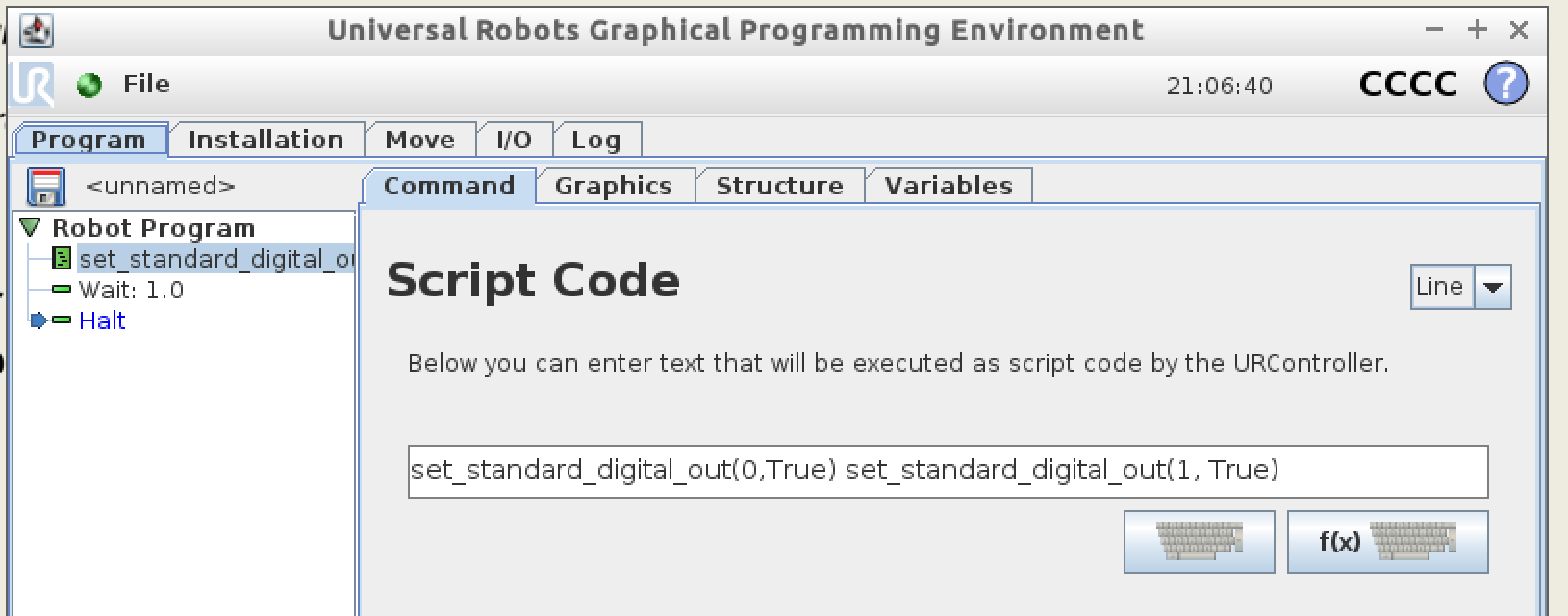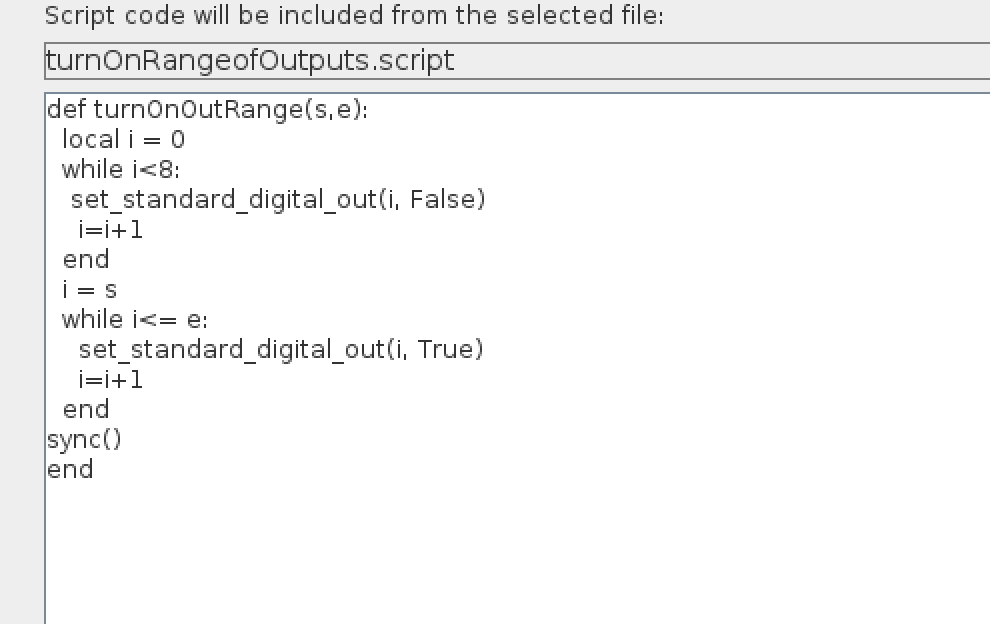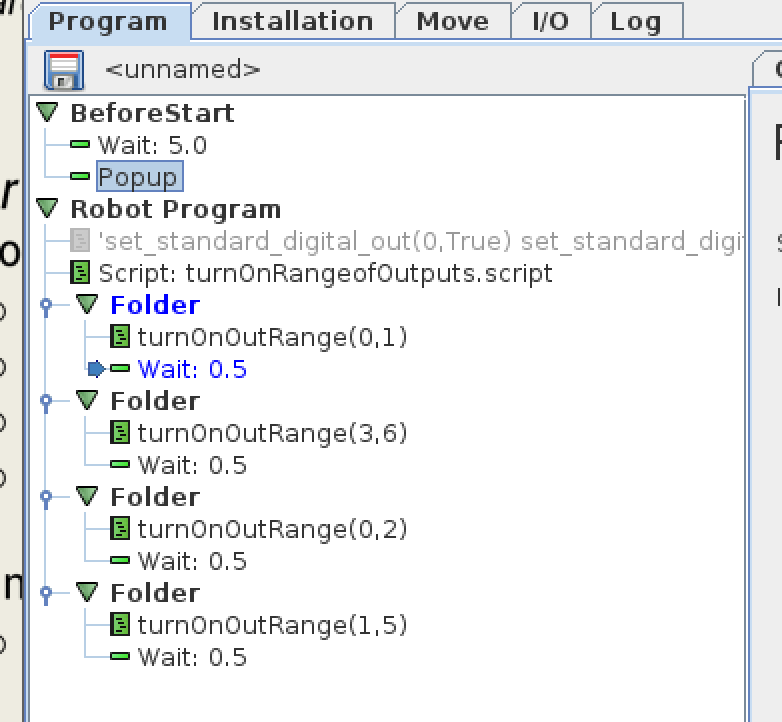Not that I am aware of, I tried playing around a bit with the formula field in the set dialog and it didn't do anything. You could use a single line script code like this:
Or if you really wanted to cheat you could write your own custom script that you could do anything with such as this script which allows you to specify a range of outputs to turn on all at once...notice it turns all outputs off first and then turns on the selected outputs
Here is the code that I wrote on the robot....
So the first time I will turn on outputs 0 and 1, the next time it will turn on outputs 3 through 6 , then 0 through 2, and finally 1 through 5. Remember outputs and inputs are numbered 0-7, not 1-8.
The wait commands are just so that we can what the program is doing
Here is what it looks like on the IO tab when the program runs.
Hope that this answers your question but also gives you some insight into how the robot can be customized to do about anything you can imagine program wise

The Dof Community was shut down in June 2023. This is a read-only archive.
If you have questions about Robotiq products please reach our support team.
If you have questions about Robotiq products please reach our support team.
 matthewd92
matthewd92
 SteveBoulay
SteveBoulay
Is it possible to assign a true value to 2 digital output at the same time by using SET command...